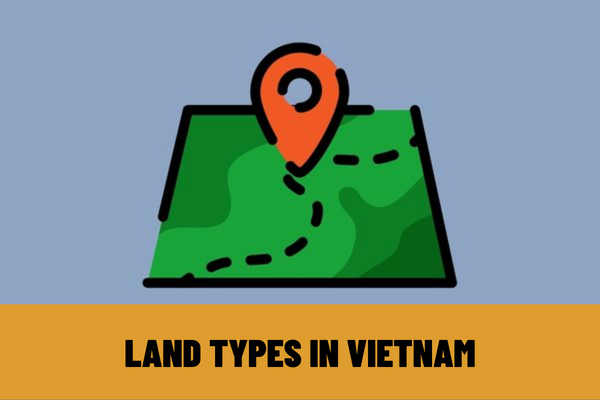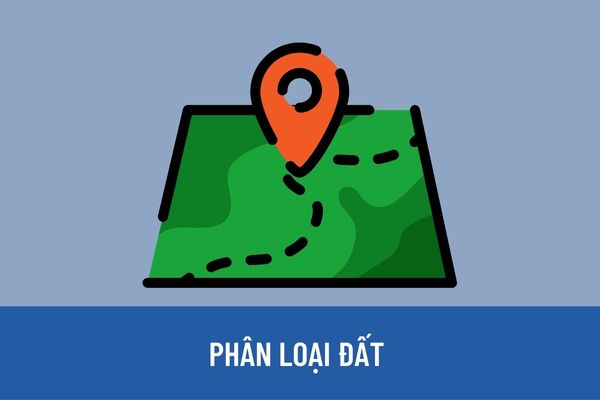What are the bases for determining land types in Vietnam? How many types of land are there according to the current land law?
What are the bases for determining land types in Vietnam?
Pursuant to Article 11 of the 2013 Land Law of Vietnam, the determination of land types is prescribed as follows:
The determination of a land type must be based on the following:
- The certificate of land use rights, or certificate of house ownership and residential land use rights which is granted before December 10, 2009; and the certificate of land use rights and ownership of houses and other land-attached assets.
- Papers on land use rights prescribed in Clauses 1, 2 and 3, Article 100 of the 2013 Land Law of Vietnam, for the cases in which the certificates have not been granted.
- Decisions on land allocation, land lease or permission for change of land use purpose issued by competent state agencies, for the cases in which the certificates mentioned in Clause 1 Article 11 of the 2013 Land Law of Vietnam have not been granted.
- For the cases in which papers prescribed in Clauses 1, 2 and 3 Article 11 of the 2013 Land Law of Vietnam are not available, the determination of land type must comply with the Government’s regulations.
The determination of land type is based on the certificate of land use rights, on the decision on land allocation, land lease, permission to change the land use purpose of the competent state agency, for cases not yet granted. The certificate and based on the Government's regulations on determining land types.

What are the bases for determining land types in Vietnam? How many types of land are there according to the current land law?
How many types of land are there?
Pursuant to Article 10 of the 2013 Land Law of Vietnam stipulating this content as follows:
Depending on land use purpose, land is classified into the following types:
- Agricultural land, including:
+ Land for cultivation of annual crops, including paddy land and land for cultivation of other annual crops;
+ Land for cultivation of perennial trees;
+ Land for production forests;
+ Land for protection forests;
+ Land for special-use forests;
+ Land for aquaculture;
+ Land for salt production;
+ Other agricultural land, including land used to build greenhouses and other building types for cultivation purpose, including fanning not directly on the land, or to build breeding facilities for cattle, poultry and other animals as permitted by law; land for cultivation, breeding and aquaculture for the purpose of learning, research or experimentation; land for planting and nursing seedlings and breeders, and land for growing flowers and ornamental plants.
- Non-agricultural land, including:
+ Residential land, including rural residential land and urban residential land;
+ Land for construction of offices;
+ Land for national defense or security purpose;
+ Land for construction of non-business facilities, including land for construction of offices of non-business organizations; land for construction of cultural, social, health, education and training, physical training and sports, science and technology, and diplomatic facilities and other non-business facilities;
+ Land for non-agricultural production and business, including land for industrial parks, industrial clusters, export processing zones; land for trading and service; land of non-agricultural production establishments; land used for mining activities; and land for production of building materials, and pottery;
+ Land used for public purposes, including land used for transport (including airports, airfields, inland waterway ports, maritime ports, rail system, road system and other transport facilities); irrigation; land with historical-cultural relics or scenic spots; land for community activities or public entertainment and recreation; land for energy facilities; land for post and telecommunications facilities; land for markets; land for waste dumping and treatment, and land for other public facilities;
+ Land used by religious institutions;
+ Land used for cemeteries, graveyards, funeral service centers and cremation centers;
+ Land with rivers, streams, canals, springs and special-use water surface;
+ Other non-agricultural land, including land for motels, tents and camps for workers in production establishments; land for warehouses and houses to store agricultural products, plant protection drugs, fertilizers, machinery and tools for agricultural use, and land for other buildings of land users which are used for non-commercial purposes and not attached to residential land.
- Unused land, including land of types for which land use purposes have not been determined yet.
Based on the analyzed regulations, the Land Law divides land into 3 groups of land, including: agricultural land, non-agricultural land and unused land. Each group of land will be divided into other specific types of land as mentioned, and each type has its own regulations on the use of each type, all of which are stipulated in the Land Law.
Thus, land has two main groups: agricultural land and non-agricultural land.
Who are land users?
Pursuant to Article 5 of the 2013 Land Law of Vietnam, land users in accordance with the land law include:
- Domestic organizations, including state agencies, people’s armed forces units, political organizations, socio-political organizations, economic organizations, socio-politico-professional organizations, social organizations, socio-professional organizations, public non-business organizations, and other organizations as prescribed by the civil law (below referred collectively to as organizations).
- Domestic households or individuals (below referred collectively to as households or individuals).
- Communities, including Vietnamese communities residing in the same village, street quarter or similar residential area sharing the same customs and practices or the same family line.
- Religious institutions, including pagodas, churches, oratories, chancels, monasteries, abbeys, religious schools, head offices of religious organizations, and other religious institutions.
- Foreign organizations with diplomatic functions, including diplomatic representative missions, consulates, other foreign representative agencies with diplomatic functions recognized by the Vietnamese Government, representative missions of organizations of the United Nations, inter-governmental agencies or organizations, and representative missions of inter-governmental organizations.
- Overseas Vietnamese as prescribed by the nationality law.
- Foreign-invested enterprises, including 100% foreign-invested enterprises, joint-venture enterprises, Vietnamese enterprises in which foreign investors purchase shares, merge or acquire in accordance with investment law.
LawNet
